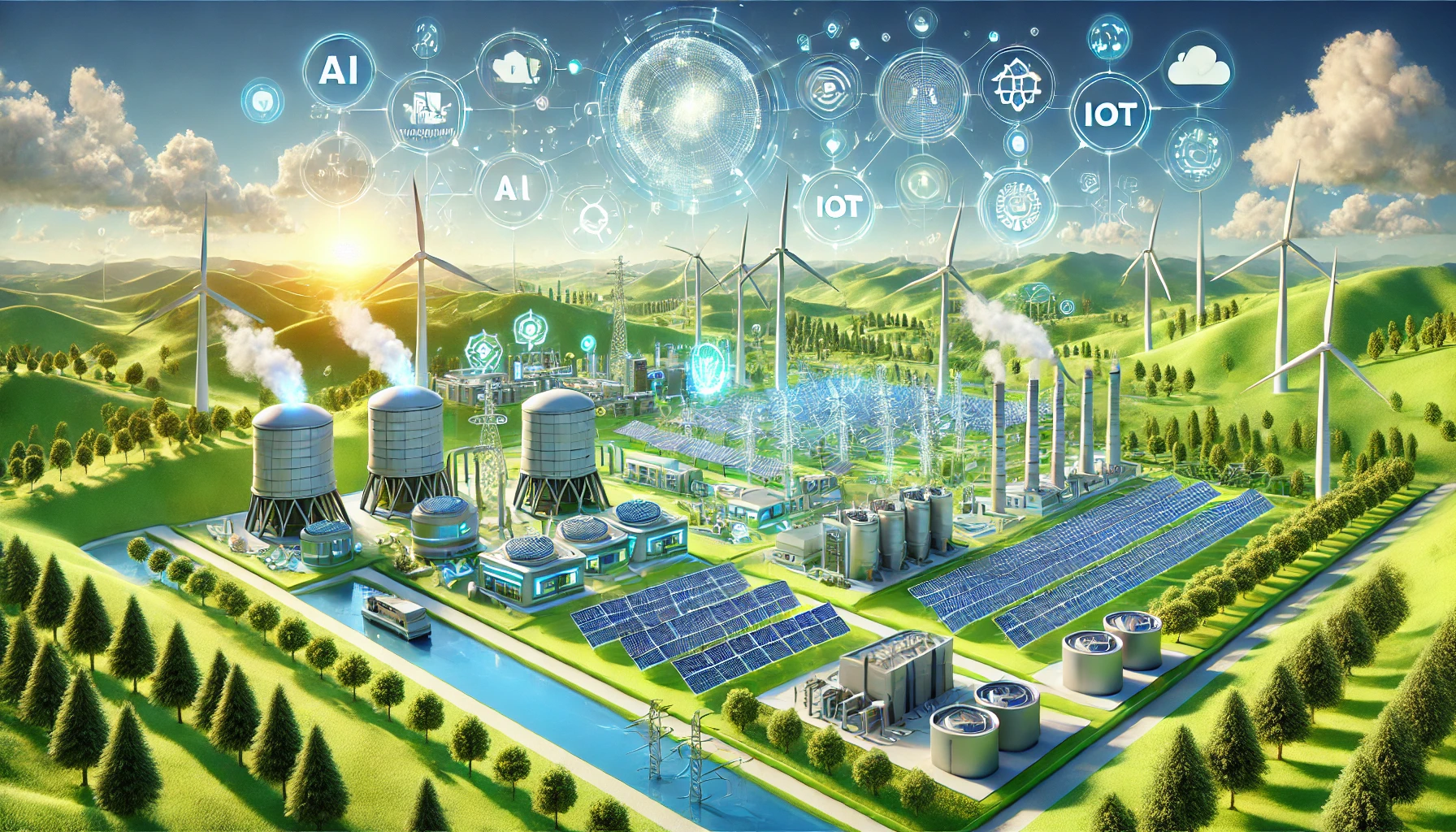Table of Contents
ToggleThe Future of Renewable Energy: Innovations and Trends
Table of Contents
- Introduction
- The Importance of Renewable Energy
- Key Innovations in Renewable Energy
- Solar Power Advancements
- Wind Energy Developments
- Hydropower Innovations
- Biomass and Bioenergy Technologies
- Geothermal Energy Progress
- Trends Shaping the Future of Renewable Energy
- Energy Storage Solutions
- Smart Grids and Microgrids
- Decentralized Energy Systems
- Advances in Energy Efficiency
- Policy and Regulatory Changes
- The Role of Emerging Technologies
- Artificial Intelligence in Energy Management
- Blockchain for Energy Trading
- Internet of Things (IoT) in Energy Systems
- Challenges and Opportunities
- Conclusion
1. Introduction
As the global demand for energy continues to rise, the focus on renewable energy sources has never been more critical. Renewable energy not only offers a sustainable solution to our energy needs but also plays a pivotal role in combating climate change. In this blog post, we’ll explore the latest innovations and trends shaping the future of renewable energy.
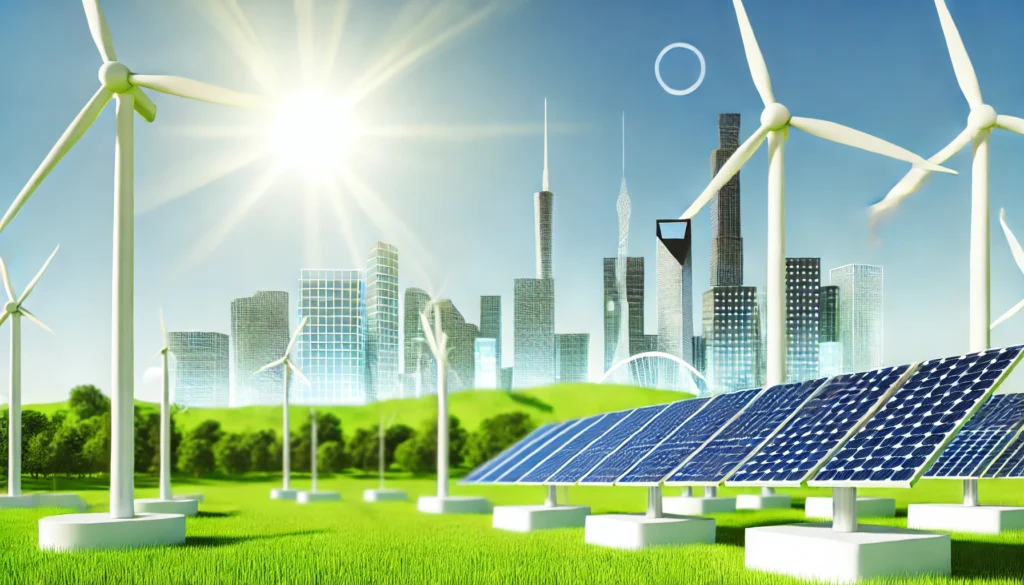
2. The Importance of Renewable Energy
Renewable energy sources such as solar, wind, hydropower, biomass, and geothermal are essential for reducing greenhouse gas emissions and decreasing our reliance on fossil fuels. They provide a sustainable alternative that can meet the world’s energy demands without depleting natural resources or harming the environment.
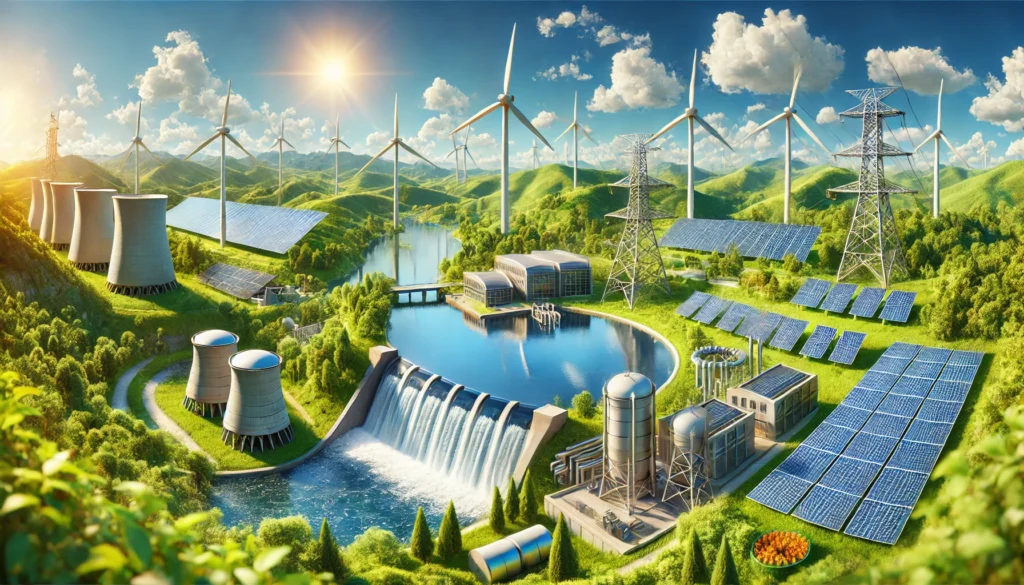
3. Key Innovations in Renewable Energy
3.1 Solar Power Advancements
The solar power industry has seen significant advancements in recent years. Innovations such as bifacial solar panels, which capture sunlight on both sides, and perovskite solar cells, known for their high efficiency and low cost, are revolutionizing the field. Additionally, solar tracking systems that follow the sun’s trajectory maximize energy capture throughout the day.
3.2 Wind Energy Developments
Wind energy continues to evolve with the development of larger and more efficient turbines. Offshore wind farms are becoming more prevalent, utilizing stronger and more consistent winds over the ocean. Innovations like floating wind turbines are expanding the potential locations for wind energy generation.
3.3 Hydropower Innovations
Hydropower remains a reliable source of renewable energy. Recent innovations include small-scale hydro systems that can be implemented in rivers and streams without large dams. Additionally, advancements in turbine technology and pumped storage solutions enhance the efficiency and flexibility of hydropower plants.
3.4 Biomass and Bioenergy Technologies
Biomass energy harnesses organic materials like agricultural waste and wood pellets. Innovations in this field include advanced biofuels and biogas production methods that increase energy yield and reduce emissions. Bioenergy with carbon capture and storage (BECCS) is also gaining attention for its potential to achieve negative emissions.
3.5 Geothermal Energy Progress
Geothermal energy taps into the Earth’s internal heat. Enhanced geothermal systems (EGS) are an emerging technology that can be deployed in a wider range of locations by creating artificial reservoirs. This innovation significantly expands the potential for geothermal energy production.
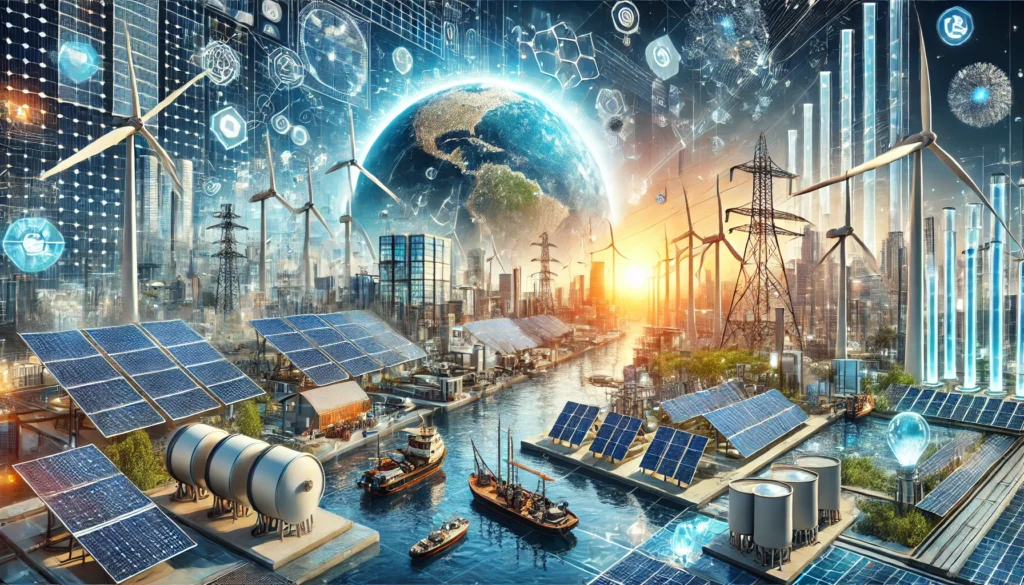
4. Trends Shaping the Future of Renewable Energy
4.1 Energy Storage Solutions
Energy storage is crucial for managing the intermittent nature of renewable energy. Advances in battery technology, such as solid-state batteries and flow batteries, are improving storage capacity and efficiency. Large-scale storage solutions like grid-scale batteries and pumped hydro storage are also essential for balancing supply and demand.
4.2 Smart Grids and Microgrids
Smart grids integrate digital technology to enhance the efficiency and reliability of electricity distribution. Microgrids, which can operate independently or in conjunction with the main grid, provide localized energy solutions, especially in remote areas. These systems enable better management of renewable energy sources and improve resilience.
4.3 Decentralized Energy Systems
Decentralized energy systems involve generating and distributing energy close to the point of use. This approach reduces transmission losses and enhances energy security. Community-based renewable energy projects and rooftop solar installations are examples of decentralized systems gaining popularity.
4.4 Advances in Energy Efficiency
Improving energy efficiency is essential for maximizing the benefits of renewable energy. Innovations in building materials, energy-efficient appliances, and industrial processes help reduce overall energy consumption. Smart home technologies and energy management systems also contribute to better energy utilization.
4.5 Policy and Regulatory Changes
Government policies and regulations play a significant role in promoting renewable energy adoption. Incentives such as tax credits, subsidies, and renewable energy mandates encourage investment in clean energy. International agreements and national targets for reducing carbon emissions further drive the transition to renewable energy.
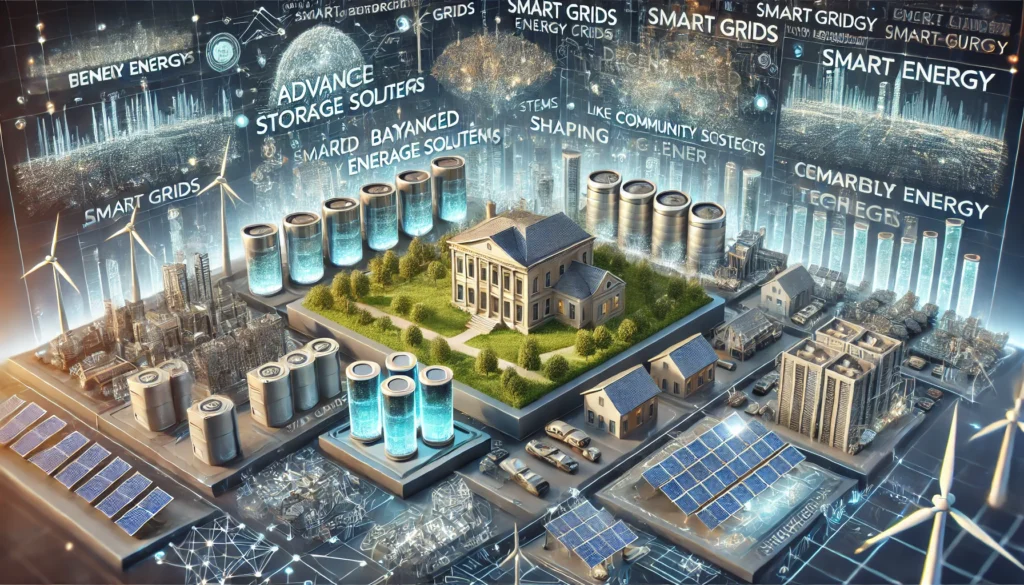
5. The Role of Emerging Technologies
5.1 Artificial Intelligence in Energy Management
Artificial intelligence (AI) is transforming the energy sector by optimizing energy management and grid operations. AI algorithms can predict energy demand, optimize power generation, and enhance the integration of renewable sources. This technology improves efficiency and reduces operational costs.
5.2 Blockchain for Energy Trading
Blockchain technology offers secure and transparent platforms for energy trading. Peer-to-peer energy trading allows consumers to buy and sell excess renewable energy directly. Blockchain also facilitates the tracking of renewable energy certificates and ensures the integrity of green energy transactions.
5.3 Internet of Things (IoT) in Energy Systems
The Internet of Things (IoT) connects devices and sensors to collect and analyze data in real-time. In the energy sector, IoT enables smart grid management, predictive maintenance of renewable energy systems, and efficient energy consumption. IoT applications enhance the reliability and performance of renewable energy infrastructure.
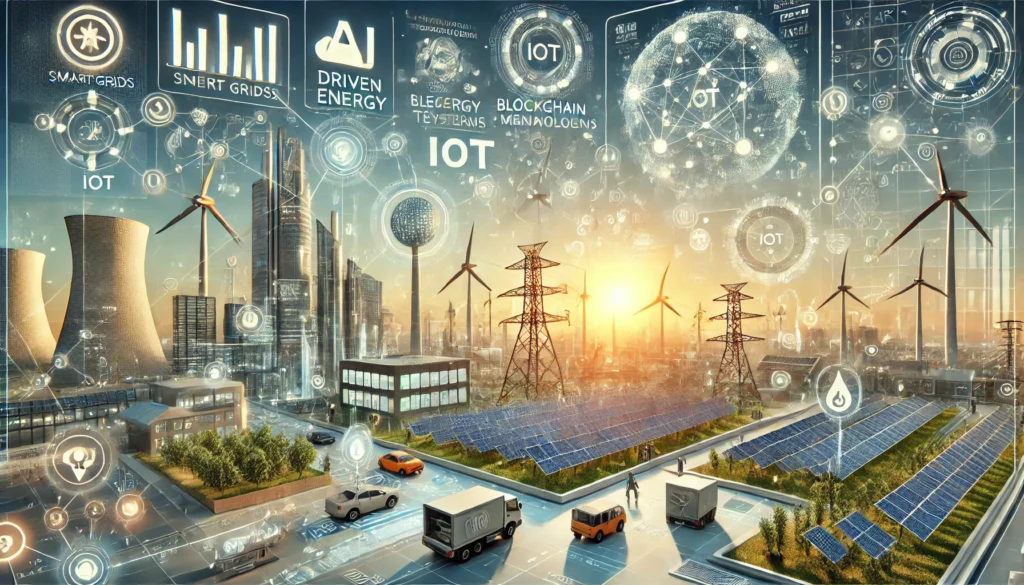
6. Challenges and Opportunities
The transition to renewable energy is not without challenges. Issues such as the intermittency of renewable sources, high initial costs, and the need for technological advancements must be addressed. However, these challenges also present opportunities for innovation and growth. Continued research, investment, and supportive policies are crucial for overcoming obstacles and unlocking the full potential of renewable energy.
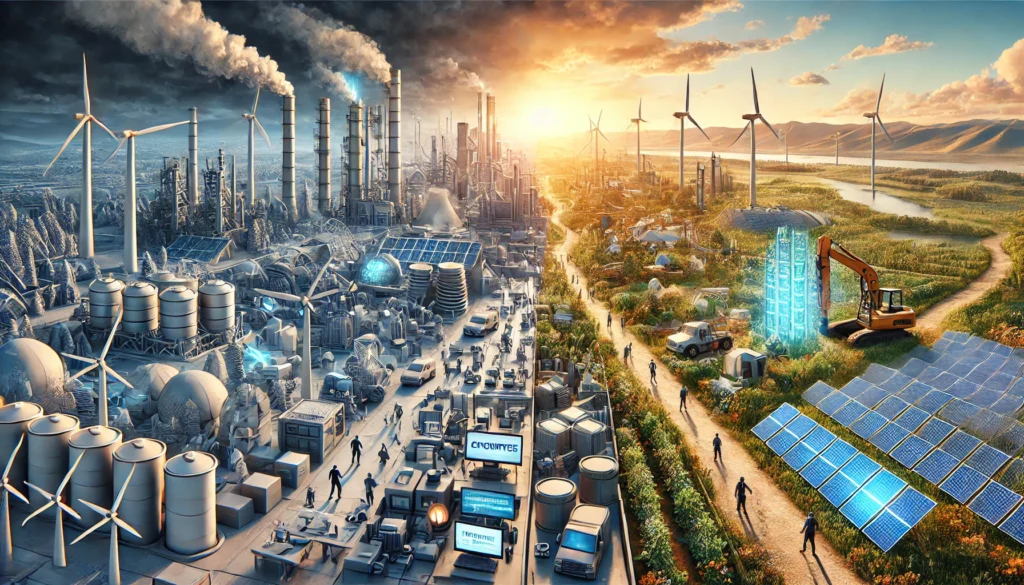
7. Conclusion
The future of renewable energy is bright, driven by continuous innovations and emerging trends. Advancements in solar, wind, hydropower, biomass, and geothermal technologies are transforming the energy landscape. Energy storage solutions, smart grids, and decentralized systems are enhancing the efficiency and reliability of renewable energy sources. Emerging technologies like AI, blockchain, and IoT are further revolutionizing the sector. Despite challenges, the opportunities for a sustainable energy future are immense. By embracing renewable energy, we can create a cleaner, greener, and more resilient world for generations to come.
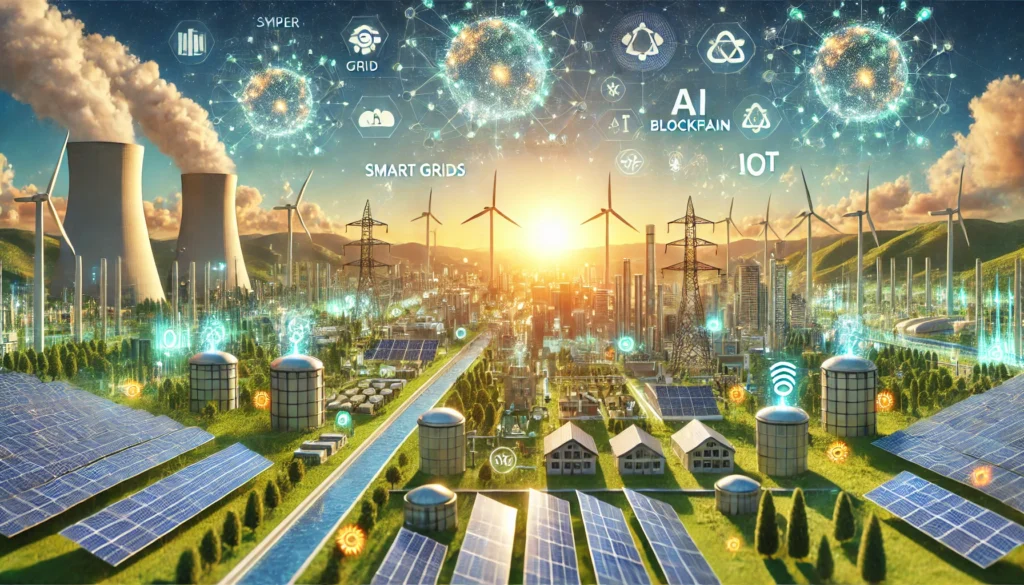
FAQs:
- What are the latest innovations in renewable energy?
- How does energy storage impact renewable energy?
- What are smart grids and microgrids?
- How can AI optimize energy management?
- What role does blockchain play in energy trading?
- What are the benefits of decentralized energy systems?
- How do policy and regulatory changes affect renewable energy adoption?
- What are the main challenges facing renewable energy?
- How does IoT enhance renewable energy systems?
- What is the future outlook for renewable energy technologies?
LINKS:
- Look 10 Years Younger With These Amazing Anti-Aging Foods
- 10 Surprising Health Benefits of Drinking Coffee Every Day
- Mental Health Matters: Insights and Advice for Better Wellbeing
- 11 Shocking Health Benefits of Garlic You Need to Know
- Benefits of Eating Almonds on an Empty Stomach
- 10 Ways to Gain Weight Healthy
- Weight Loss Tips: Effective Strategies for Shedding Pounds
- What Happens to Your Body When You Ignore Your Thirst?
- Tea vs Coffee: The Ultimate Showdown
- The Hidden Dangers in Your Everyday Food: What You Need to Know
- Forget Chemo: This Ancient Remedy
- Unlocking the Secrets of Longevity
- The Shocking Truth About Mindfulness: They Don’t Want You to Know
- Quantum Computing’s Futuristic Promise: Exploring the Secrets of the Universe
- 10 Mind-Blowing Ways DLT and AI Are Reshaping Our Digital Reality
- Extended Reality Meets Distributed Ledgers: A Glimpse into the Future of Immersive Tech
- How to Lose Weight Fast: Science-Backed Tips and Strategies
- From Sci-Fi to Reality: Quantum Computing’s Impact on DLT and AI
- The Holy Trinity of Tech: DLT, AI, and Extended Reality Converge
- Why DNA Computing Might Be the Key to Unimaginable Technological Advances
- The Race to DNA Computing: How Scientists Are Redefining the Limits of Technology
- The Quantum-DNA Nexus: Unraveling the Potential of Hybrid Computing Models for Complex Problem Solving
- Understanding the Impact of Stress on Your Body and Mind
- The Evolution of Music: How Streaming Has Changed the Industry
- The Convergence of Cutting-Edge Technologies: Exploring AI, Blockchain, and Quantum Innovations
- Daily Productivity Boost: 10 Effective Strategies
- Top 10 Books Everyone Should Read in Their Lifetime
- Advanced Computational Paradigms: The Synergy of Quantum Computing, AI, and Bioinformatics
- The Future of Early Disease Detection
- Eco-Friendly Products You Need in Your Life Right Now
The Future of Renewable Energy: Innovations and Trends
The Future of Renewable Energy: Innovations and Trends

